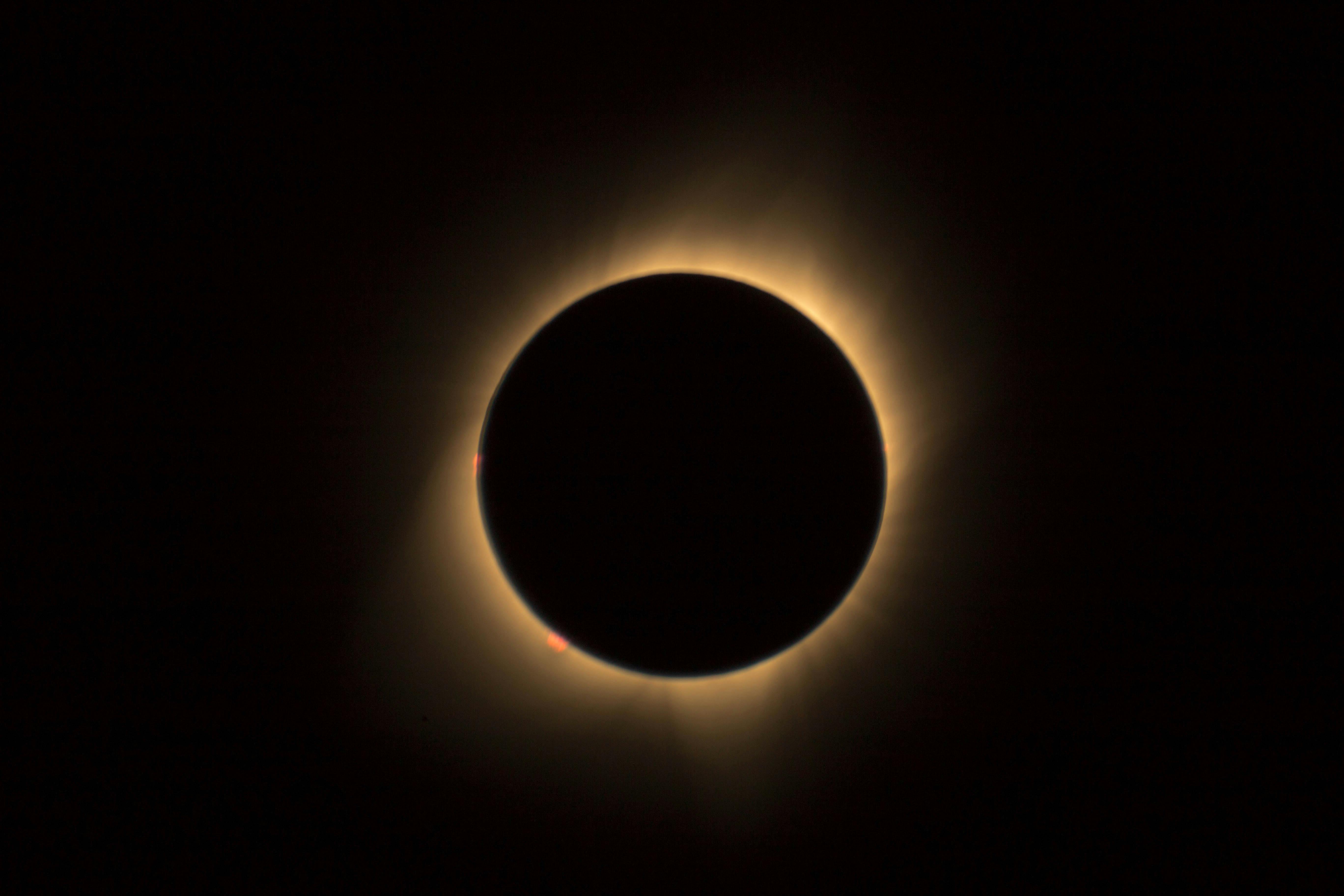8 Safe Solar Eclipse Activities for Kids Today | AstroSafe
Want to help kids safely participate in fun and educational activities involving the rare solar eclipse? Here are 8 kid-safe solar eclipse activities today!
April 11, 2024

Exploring Solar Eclipse Activities for Kids
Hello, young astronomers! Today, we embark on an exciting journey to explore the wonders of the universe with a focus on solar eclipses.
What is a Solar Eclipse?
A solar eclipse is a natural phenomenon that happens when the Moon passes between the Sun and Earth, casting a shadow on our planet. If you happen to be at the right place and at the right time, solar eclipses can be observed safely by following some of our activities today! Let's dive into some fun and educational activities to help children understand this celestial event better.
Activity #1: Make a Solar Eclipse Viewer
If you happen to be at the right place at the right time where the solar eclipse can be viewed, here are the materials that you will need: cardboard box (shoe box or cereal box works, too!), aluminum foil, white paper, tape, scissors, and a pin or needle.
Procedure:
- Cut a square hole in one side of the cardboard box.
- Cover the hole with aluminum foil and secure it with tape.
- Make a small pinhole in the foil.
- Tape a piece of white paper inside the box opposite the pinhole.
- Stand with your back to the Sun, hold the box up to the light, and observe the eclipse projection on the paper inside.
Activity #2: Learn About Eclipse Safety
Teach students about the importance of safety during solar eclipses to prevent eye damage. Emphasize the significance of using proper eye protection, such as eclipse glasses or solar viewers like what we have on activity 1, when observing the event directly. An age-appropriate source can be this one from NASA.
Activity #3: Create a Solar Eclipse Model
Materials needed: flashlight/small lamp, globe or ball (basketball/volleyball), smaller ball (tennis ball/baseball to represent the Moon), and a dark room.
Procedure:
- Place the globe in the center of the room to represent the Earth.
- Have a student hold the smaller ball (Moon) between the flashlight/lamp and the globe.
- Dim the lights and demonstrate how the Moon's shadow falls on the Earth, creating a solar eclipse.
- Encourage students to take turns playing different roles and observe the eclipse from various perspectives.

Activity #4: Solar Eclipse Art
Materials needed: black construction paper, chalk pastels, and white colored pencils.
Procedure:
- Have students draw the outline of the Sun and Moon on the black paper.
- Use chalk pastels to color the Sun in vibrant shades.
- Draw the Moon with the white colored pencil to represent its reflective surface.
- Encourage creativity in depicting the eclipse's dramatic effect on the sky.
Activity #5: Solar Eclipse Storytime
Read age-appropriate books about solar eclipses, such as "When the Sun Goes Dark" by Andrew Fraknoi and Dennis Schatz or “Eclipse: Darkness in Daytime" by Franklyn M. Branley. After reading, engage students in discussions about the science behind eclipses and their cultural significance in different societies.
Activity #6: Eclipse Shadow Play
Materials needed: flashlight, small objects (e.g., toys, blocks), and a wall or surface.
Procedure:
- Set up a flashlight to represent the Sun and position it on one side of the room.
- Place various objects on the opposite side to cast shadows.
- Observe how the objects' shadows change as you move them closer or farther from the light source.
- Explain how the Moon's shadow behaves similarly during a solar eclipse, creating different eclipse phases.
Activity #7: Eclipse Observation Journal
Provide students with observation journals to record their experiences before, during, and after a solar eclipse. Encourage them to draw pictures, write descriptions, or make predictions about what they expect to see during the event. After the eclipse, reflect on their observations and compare them with their predictions.
Activity #8: Virtual Eclipse Viewing
Explore online resources, such as NASA's or the European Space Agency’s website or virtual planetariums, to access live streams or simulations of solar eclipses. Allow students to witness the event virtually and discuss their observations in real-time. This activity offers an opportunity for students to experience eclipses that may not be visible in their location.
Conclusion: Solar Eclipse Activities Can be Fun and Safe!
Solar eclipses are amazing natural phenomena that can spark curiosity and wonder in children of all ages and adults alike. By engaging in these interactive activities that spark curiosity, children can deepen their understanding of eclipses while fostering a lifelong appreciation for the wonders of the universe. Let's continue to safely explore, learn, and marvel at the beauty of our solar system together!






